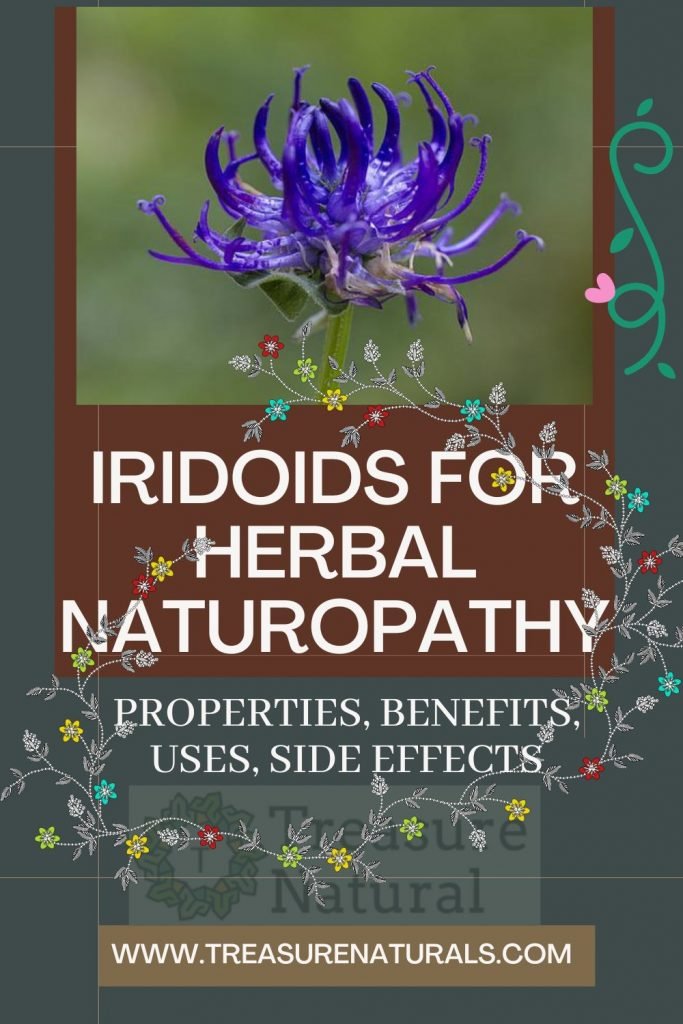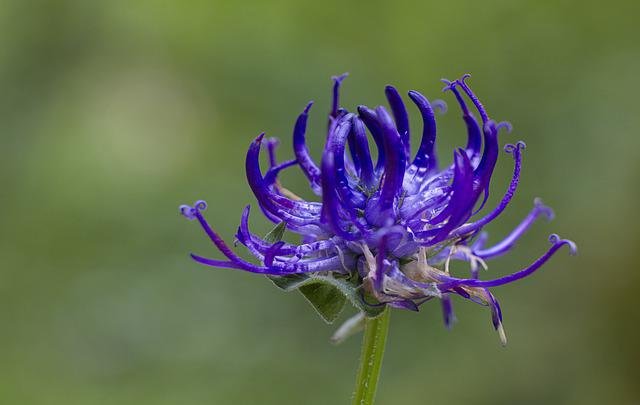
Iridoids are a heterogeneous group of molecules with different therapeutic activities: anti-inflammatory, analgesic, antirheumatic, spasmolytic, antiallergic and hypotensive. The name derives from the Australian ant Iridomyrmex which seems to use them as a defense mechanism.
Where are the iridoids found
Iridoids are present in several plants, including Harpagophytum procumbens (Burch.) DC. ex Meisn., Valeriana officinalis L., Olea europea L., Plantago lanceolata L.
Harpagophytum procumbens (Burch.) DC. ex Meisn., known as Devil’s Claw, is used for its anti-inflammatory and anti-rheumatic properties, and is the best-known iridoid plant. Originally from South Africa, it is characterized by fruits with thorns (claws), hence the name of the plant. It is a perennial herb with creeping stems that originate from a primary root, from which the tuberiform secondary roots branch off. The leaves are green-gray and the tubular flowers are yellow or purple.
In the devil’s claw there are iridoidic monoterpenic glycosides, concentrated in the secondary roots, among which the most important are harpagoside and procumbide.
Valerian, known above all for its hypnotic and sedative properties, is characterized by the presence of a group of iridoids, the valepotriates.
Valerian is a perennial herbaceous plant, characterized by a stoloniferous rhizome, branched cylindrical stems and grooved at the top. The opposite leaves are lanceolate. The small pinkish-white flowers are gathered in corymbs. The fruit is an achene. Its distribution range includes all of Europe.
The olive tree, universally known for the extraction of oil from its drupes, contains 5-6% of secoiridoids, expressed as oleoside. Oleuropein has an antioxidant, hypotensive, spasmolytic, hypoglycemic action.
The plantain, Plantago lanceolata L., grows abundantly along the streets and meadows. Also known as a five-veined herb, it is characterized by lanceolate leaves (although there are other species with wider leaves). Plantain is known for its laxative properties of its seeds and anti- inflammatory properties of its leaves. The plant contains iridoids, including aucubin; the latter by hydrolysis forms aucubigenin, the active compound.
Properties of iridoids
The study of these compounds is quite recent and initially focused on the antirheumatic properties of the devil’s claw. The root extracts of this plant have a similar mechanism of action to NSAIDs (non-steroidal anti-inflammatory drugs). Harpagophyte is likely to act by inhibiting cyclooxygenase (COX-2) and inflammation regulator nitrite oxide synthetase.
The activity of the harpagophyte refers to the harpagoside, the iridoid present in greater quantities (up to 80%). Although as often happens in phytotherapy, the administration of the single active ingredient does not reproduce the activity of the entire phytocomplex: harpagoside alone shows analgesic but not anti-inflammatory activity.
The harpagophyte acts by inhibiting the synthesis of eicosanoids (regulators of the inflammatory response) in vitro, but some authors hypothesize that the analgesic and anti-inflammatory activity may be determined by a different mechanism from that of NSAIDs, so much so that the harpagophyte is also used in the treatment of digestive disorders.
In this respect, the harpagoside has a bittering power comparable to that of the gentian. Devil’s claw is used as a stomachic and is considered one of the most effective tonic bitters. It works by promoting the production of bile and the emptying of the gallbladder.
Devil’s claw is commercially available in various pharmaceutical forms: hydroalcoholic extract or mother tincture, dry extract, in ointments and ointments for external applications. Literature data indicate that drug efficacy is achieved with the intake of at least 30 mg / day of harpagoside, with optimal effects around 60 mg / day for chronic pain and 100 mg / day in acute cases.
The sedative and hypnotic action of valerian is attributable to valpotriates, esters of iridoids, the most important of which is baldrinal, an unsaturated aldehyde. The drug is the root and rhizome of the plant.
The mechanism of action involves the gamma-aminobutyric acid (GABA) system and the benzodiazepine receptor. The action affects the central and vegetative nervous system, reducing the anxious component. Its properties are similar to those of major tranquilizers, but without the toxic effects.
A study has shown that valerian improves the duration and quality of sleep in subjects suffering from insomnia following benzodiazepine withdrawal. These effects were traced to the drug’s weak anxiolytic activity.
Valerian is commercially available in various pharmaceutical forms: mother tincture or hydroalcoholic extract, dry extract and herbal tea cut.
Contraindications of iridoids

Devil’s claw is easily tolerated when used daily for up to 16 weeks. However, there is the possibility of interaction with numerous antacid, antidiabetic, antihypertensive, warfarin, antiarrhythmic, NSAID and / or cortisone drugs.
Furthermore, it is contraindicated in pediatrics, pregnancy, oxytocic action (inducing birth) and lactation, acute gastropathies, peptic ulcer, reflux oesophagitis. In some predisposed subjects or at high doses it can cause diarrhea.
The valepotriati of valerian taken in high doses can induce headaches, gastrointestinal disturbances, sleep disturbances, restlessness. In addition, valerian prolongs the sleep induced by barbiturates, therefore it should not be taken in the days before surgery. Finally, it is not recommended during pregnancy and breastfeeding and if at the same time you take sedative-hypnotic substances or are being treated with antiepileptic drugs.






